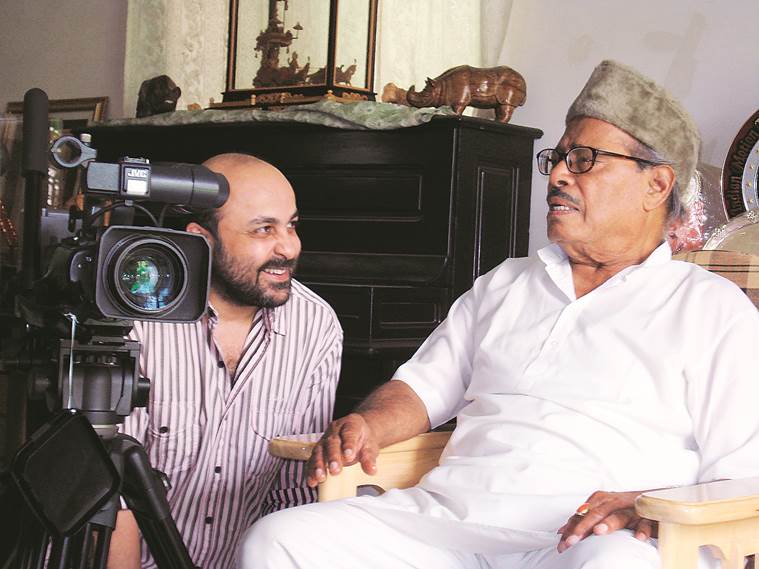 RD Burman
RD Burman
When Mumbai-based playback singer Annette Pinto was called in to sing for Raj Sippy’s Satte Pe Satta, she went to the recording studio expecting a rehearsal for a typically unique RD Burman melody. The year was 1981 and Rahul Dev Burman or Pancham as he was fondly called, had already spent two decades giving the country tunes from depths that no other composer seemed to have access to. But minutes after arriving at the studio, Pinto, who also recorded the popular Dilbar mere in the same film, was to put some water in her throat and make gargling sounds on the microphone. The “composition”, the eeriness of which still sounds as sinister, became the background score for villain Babu (Amitabh Bachchan) leaving the jail to wreak havoc. “He was so excited. Said, ‘Yahi chahiye’,” says Pinto with a laugh in Brahamanand Singh’s 2009 documentary Pancham: Mujhe Chalte Jaana Hai, which released last month in theatres and on Netflix, and chronicles the journey of the Pied Piper of film music in India, composer RD Burman aka Boss.
Pancham was sampling sounds by blowing into empty beer bottles for Mehbooba mehbooba (Sholay), clinking cups and saucers for Chura liya hai (Yaadon ki Baraat, 1973) and scraping comb sounds in Mere saamne wali khidki (Padosan), among others. “He brought sounds into films that weren’t there before and etched them in our minds,” says Singh, 52, who took the decision to create the film in 2005, after harbouring much resentment.
 RD Burman with composer Laxmikant
RD Burman with composer Laxmikant
“We are a nation of poor archivers. I was quite angry that every time RD’s birth or death anniversary would come, TV channels would show a five-minute capsule, say that he was a genius and much ahead of his times. But no one had made a concerted effort to understand what that genius was,” says Singh, who realised early that the tribe of his associates was a vanishing one and, back in 2005, when he began, there was no Mahmood, Nasir Hussain, Majrooh Sultanpuri or Goldie Anand — people Pancham had golden collaborations with. “But there were still many around,” says Mumbai-based Singh, who grew up in a family where classical music was heard and talked about. His grand uncle had learnt music in Calcutta with Pancham and Singh’s childhood was replete with stories about the composer.
 A working still of Brahamanand Singh with Manna Dey
A working still of Brahamanand Singh with Manna Dey
He went knocking on many doors and has featured descriptive interviews with many associated with Pancham, including singer and wife Asha Bhosle, Manna Dey, lyricists Gulzar and Javed Akhtar, actors Shammi Kapoor, Randhir Kapoor and Rishi Kapoor, director Vidu Vinod Chopra, lyricist Gulshan Bawra, saxophone player Manohari Singh and his musicians Pt Shiv Kumar Sharma and Pt Hari Prasad Chaurasia, among others.
Musical perspectives are provided by percussionist Taufiq Qureshi, contemporary composers Shankar Ehsaan Loy, Vishal Bhardwaj and Shantanu Moitra apart from many from Pancham’s own illustrated team of musicians. “It was a mammoth task to get everyone together,” says Singh, who won two national awards for the film. He put in his money and four years of his life into the documentary that eventually returned 2500 hours of footage, one that required careful editing for a 113-minute film.
When iconic composer SD Burman’s son made an appearance on the music scene, oiled-back hair, big black glasses and a ton of ideas, not many took him seriously. Bhosle recalls how many producers who had worked with SD Burman told Pancham how he didn’t have his father’s touch. “When he wanted to have fun he’d say Shakti saab (Samanta), ‘I have one of my father’s tunes.’ And he’d play one of his own tunes. And they’d invariably say, ‘See this is called quality composition’. And he’d look at me, poker-faced with his big eyes,” says Bhosle in the film.
In the film, Singh wades through the life of Pancham by understanding his music, his folk inspirations, his ideas of going offbeat, using guitar as the rhythm and working with poetry that wasn’t in any metre. Gulzar says in the film, “He’d say, ‘Ye gaana aur koi nahi lega, wohi le jayega aur usiki film mein fit hoga’.” The two collaborated on iconic projects such as Parichay (1972), Aandhi (1975) and Ijaazat (1987).
The film also touches upon Pancham’s relatively unknown work with a Spanish outfit and his “Puja albums”, which were mostly famous in West Bengal. Another significant element, says Singh, was his humility — treating artistes with respect and looking after his team during medical emergencies, among others. For such a multi-faceted personality, Singh says that one of the biggest challenges was to do with structure “so that people remained hooked”. “Also, there was hardly any footage of him so how do you create him out of nowhere?” says Singh, who also takes one through the difficult phase of Pancham’s life where he had 27 flops in a row. Subhash Ghai didn’t inform him of giving Ram Lakhan to Laxmikant-Pyarelal despite signing him for it, and he felt humiliated. But just before he died, Burman gave the world 1942-A Love Story, his swansong. Numbers such as Ek ladki had a sense of melody and gentleness that we still crave for. “There was no one like him. There can be no one like him,” says Singh, who is about to release his latest feature film Jhalki, the story of a nine-year-old girl looking for her brother. The film, which deals with child slavery, has Boman Irani and Divya Dutta in important roles and will be travelling to festivals this year.